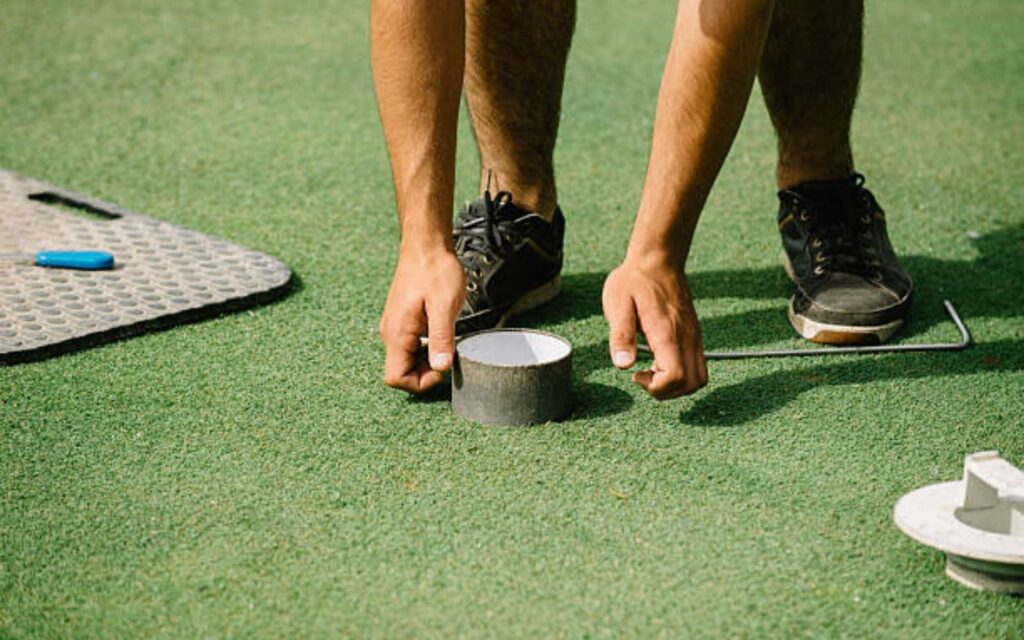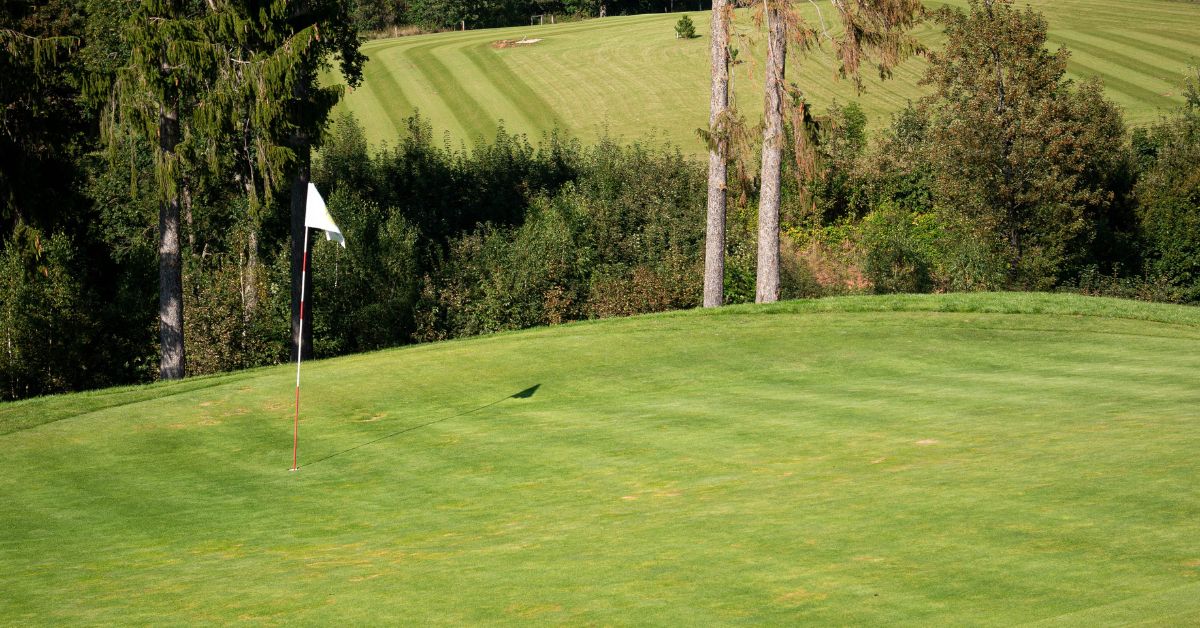Picture the scene.
You strike a beautiful approach shot and pace up to the green full of confidence. But upon closer inspection, you find that the hole is positioned on top of a harsh slope…
Miss your putt slightly from above the hole, and the ball will roll to a stop even further from the hole than before.
Hole locations like this can certainly feel unfair, and somewhat illegal.
But is there such a thing as an illegal pin in golf?
In this article, you’ll learn about the factors recommended by the USGA regarding hole locations, the systems used by golf courses to choose pin placements, and how greenskeepers manage the process of moving holes.
What Is an Illegal Pin in Golf?
There are no rules about pin placement, so there is no such thing as an illegal pin in golf. A hole can be placed anywhere on the green. However, the USGA does provide guidelines for hole locations, with factors including slope and proximity to the edge of the green.
Illegal, or Just Tough Luck?
Occasionally, we hear golfers complain on the greens about “illegal” pin placements. This is often due to a hole’s proximity to the edge of the green, or its position on a slope.
While this can be frustrating to experience on the course, there are no concrete rules that determine where a hole should be placed.
By the strict letter of the law, a hole can be placed in any spot on the green.
Nevertheless, the USGA does provide a set of guidelines for golf course operators to follow when choosing pin locations.
USGA Pin Placement Guidance
Primarily used for tournament golf, the USGA’s Handicap Manual provides some guidance on hole locations.
Rule 15.3 outlines two main factors affecting hole location:
- Proximity to the edge of the hole
- Physical qualities of the green
The USGA suggests that holes should be placed “at least four paces from the edge of the putting green.” This distance should be extended even further if there’s a bunker near the edge, or if the green’s edge slopes downward.
Secondly, the USGA suggests that at least a 2-foot radius around the hole “should be as nearly level as possible and of uniform grade.” The hole shouldn’t be placed on a steep slope upon which a missed putt from above the hole would roll a long distance past the cup.
Ultimately, the main thing for course operators to have in mind when deciding where to place a hole is “good judgment in deciding what will give fair results.”

An Unfair Pin Placement
In tournament scenarios, some might argue that no pin placement is unfair as every golfer has to play the same hole.
However, there are some examples of hole locations so difficult that it takes skill out of the equation, and relies more on luck.
Take the video below, which went viral recently. It shows a punishing pin placement at a golf tournament, where the hole was placed at the crest of a harsh slope.
Countless putts which missed the hole were sent rolling off the edge of the green!
How Do Golf Courses Avoid Illegal Pins?
The USGA encourages course operators to use a balanced selection of hole locations “for the entire course with respect to left, right, central, front and back positions.”
To keep track of these changes, courses often use a pin location map with several points of reference. This makes it easy for the maintenance team to rotate the hole locations.
Golf course architect Jeffrey Brauer’s plans outline anywhere from 24 to 36 hole locations for every green he designs.
He splits the green into six areas: front, middle, and back on both the left and right sides. This allows him to assign four to six potential hole locations for each section.
On larger greens, there is more scope for variation in the pin position.
How Do Golf Courses Move Holes?
Greenskeepers use hole-cutting tools to physically change hole locations.
Firstly, the greenskeeper pushes the cutter into the new spot on the green, then pulls the tool up removing a plug of turf and dirt.
After that, the bottom of the new hole is smoothed out to ensure the cup fits perfectly. The cup is inserted, and white spray paint may be added to increase visibility. The flag is put in place as a final test, to ensure it stands vertically.
Then, the greenskeeper sets the hole cutter in the existing hole and releases the plug of turf and dirt removed from the new hole.
Extra dirt is added if the turf doesn’t sit flush with the green’s surface, and water is applied to help the plug bond with the surrounding turf.
The video below illustrates this satisfying process!
Why Do Golf Courses Change Hole Locations?
Hole locations are changed for two main reasons:
- To prevent wear in one spot
- To add variety to the course
Firstly, if hole locations weren’t moved, foot traffic would be concentrated in one part of the green. This would cause the area around the hole to wear over time, which is detrimental to the green’s health.
The process goes hand-in-hand with golf course fertilization and green aeration, with all processes aiming to alleviate the environmental stresses on the turf.
Secondly, varied hole locations add variety to the course. Golfers are challenged to use different approach shots and are presented with putts breaking in different ways.
How Often Do Courses Change Hole Location?
Many golf courses will change the hole location daily. Greenskeepers are very efficient at the process, and it’s beneficial for the long-term health of the green.
However, sometimes a hole location will stay in one spot for several days when play is minimal, and foot traffic is lower than usual.

Conclusion
In summary, there is no such thing as an illegal pin placement in golf.
Instead, the USGA provides a set of guidelines for courses to follow. These include proximity to the edge of the green, and how to deal with sloping ground.
It can be frustrating to encounter challenging pin locations. Nevertheless, you should try and take it in your stride and don’t let it impact the rest of your round. Enjoy the beautiful game!


